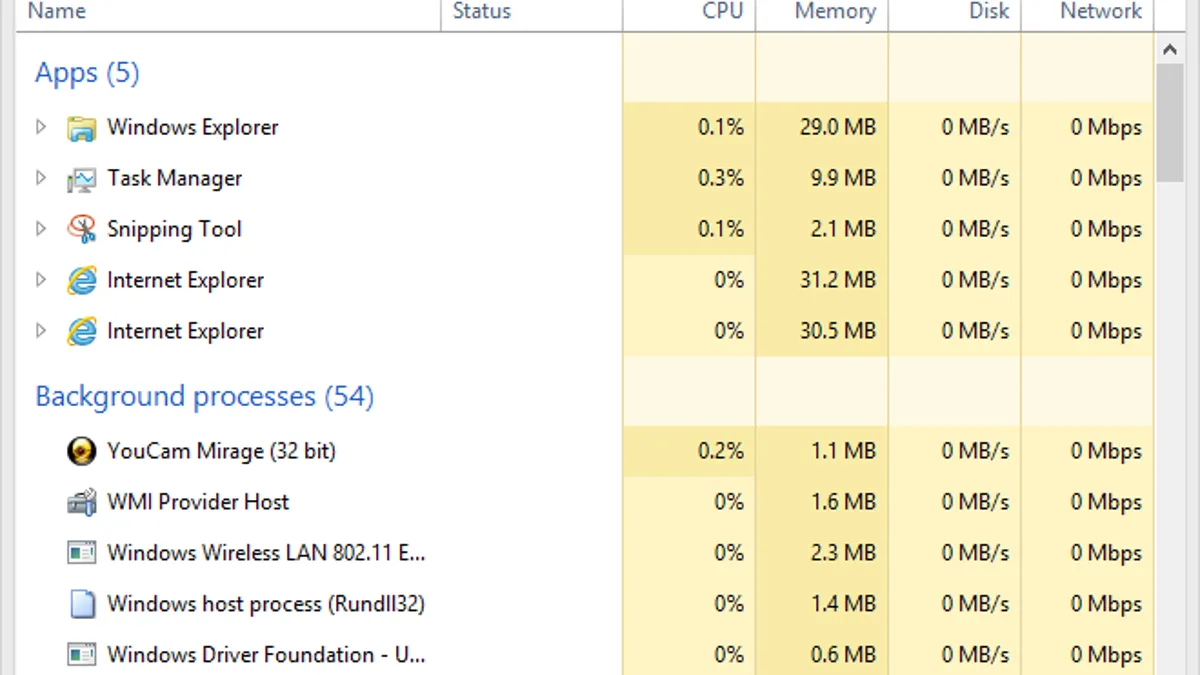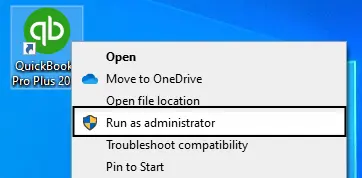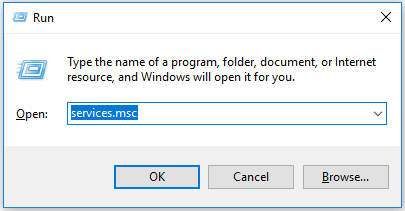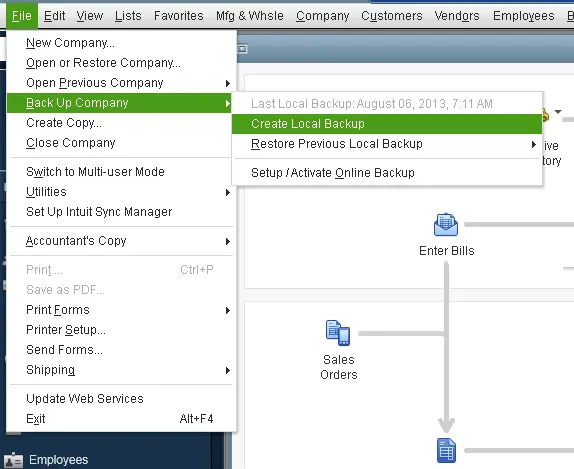You are not alone if you experience the issue of QuickBooks Update Stuck at writing registry values or not finishing. This kind of situation affects many users, but there are practical solutions to help restore your QuickBooks software to normal, smooth running. This article covers common symptoms, causes, and specific troubleshooting steps to diagnose update issues.
Step-by-step solutions to fix Update issues (Updated)
These solutions will guide you in how to troubleshoot QuickBooks update stuck at 34 for a smooth experience:
Solution 1: Basic Troubleshooting Steps
Basic troubleshooting is required before considering the most complicated solutions. The very first basic steps in case of having QuickBooks update stuck at 28 issue are as follows.
Resetting the Application
- Open the Task Manager (Ctrl + Shift + Esc) and close all the running tasks in the background. By doing so, it frees up your resources.

- Use Disk Cleanup to clean files on your computer, but this is not necessary. It may increase your speed at this time, so let’s clean temporary files sometimes or always.
- You have to select the right for QuickBooks followed by “Run as administrator.” The problems related to permission QuickBooks Not Updating.

System Resource Monitor
- Make sure there is at least enough free space on the disk available to allow hosting the updates. A minimum of 1-2GB of free space will be a must for any update.
- Open Task Manager and watch how the CPU and RAM might be utilized as the updates are applied. High activity may show that your system is taking a bit of a fighting chance.
- Use the Windows Event Viewer to see whether there are error messages around QuickBooks or the overall system. Having these may get you directly to a specific solution.
- Test that QuickBooks is working correctly outside of the update process. This can help isolate the problem from the update itself.
Solution 2: Network Diagnosis
The network is the most common cause of QuickBooks update stuck at 100 problems. These tests identify and resolve issues that come from a network-related level:
Testing Your Connection
- Check the internet speed online test to make sure that a connection to the Internet has a stable high-speed bandwidth. If showing very low speed, this then means possibly troubleshooting with the network.
- DNS settings should be correct and it can be solved using Google’s DNS servers 8.8.8.8 and 8.8.4.4 if the problem persists.
- Try to connect using a mobile hotspot or another network to solve the issue you’re experiencing, such as your typical internet connection.
Change your Firewall Settings
- Make sure QuickBooks is allowed to go through your firewall and add it to the exceptions list so it doesn’t start interrupting you.
- Ensure that the ports for QuickBooks updates are open. Ports 8019 and 80 are very frequently used, so these need to be opened. All the above settings will be configured in order to update reliability.
- Disable the firewall as a troubleshooting step to see if that will help the issue of failed updates and enable it again for security reasons.
Solution 3: Manage QuickBooks Services
QuickBooks services can create QuickBooks update stuck at 30 percent issues as well. Here is the solution to manage and troubleshoot the QuickBooks services as follows:
Open Windows Services
- You need to open the Windows Services console from the Run dialog box and write `services.msc`.

- This utility allows you to manage the services on the system. Now, search for QuickBooks services, such as QuickBooksDBXX and QuickBooks FCS. All these services are important for proper working.
- Make sure that all the above services are running. If any of them are stopped, right-click and select “Start” to restart them.
Service Configuration
- All the required QuickBooks services should be automatic so that they can automatically start when the machine is started.
- All services have services depending upon others, so they are running well and stable for other service functions.
Solution 4: Installation Advanced Solutions
If the above troubleshooting solution does not work to fix QuickBooks update stuck in reboot loop issue, then one of the following installation solutions can work:
Clean Installation:
- Before such a basic change is made, back up all the company files. It will help maintain data integrity through the change.

- Uninstall the QuickBooks application from the Control Panel. You must comply with all the instructions accordingly to ensure complete removal of QuickBooks.
- Use a reliable registry cleaner to remove all the remaining entries that have something to do with QuickBooks that will remove any leftover configurations that may cause some problems.
- Make sure that you use a good registry cleaner that cleans all the leftovers concerning QuickBooks. This will eliminate the residual configurations, and this could cause many problems, like QuickBooks won’t update
- After uninstalls, make sure that you look in the installation directory for all of the files that QuickBooks will leave behind. This will now be a clean install of the program, which should no longer have the issues that it had before.
- Restore your company files from the clean backup you created before.
Needed to upgrade components
- Make sure that the.NET Framework has the latest version installed, which is highly important for QuickBooks, and you may get updates through Windows Update.
- Upgrade to the most current versions of the Visual C++ allocation in order to resolve compatibility issues.
- Make sure you have the latest MSXML updates installed, as most applications make use of MSXML to execute their operations.
Solution 5: Optimization Techniques of the System
Your system performance will be another way to improve your QuickBooks update stuck at 24 solution. Here are a few techniques for doing it:
Performance Tuning:
- Schedule the usage of a Windows-built disk cleanup tool to clean out all the temporary files and other system junk, causing the system to run slow.
- Use some good registry cleaning software to correct some of the problems that could possibly impact QuickBooks’ proper operation. Be cautious about changes to the registry, though.
- Check regularly for updates to your hardware drivers, especially network and graphics drivers, to prevent any conflicts that may arise with updates to QuickBooks.
- Configure the system to set background applications to low to allow QuickBooks enough resources to operate freely.
Security Setting Upgrade
- There should be rights of permission for all the users of QuickBooks, especially if a multi-user system exists, and proper access would even prevent problems with accessibility on updates.
- Configure your firewall and antivirus software so as not to interfere with QuickBooks updates. You might need to set up some rules for it to work.
Strategies to Minimize Problems in the Future
Preventive Strategies that will help you to avoid QuickBooks Update Not Working problems in the future are as follows:
Maintenance Routines
- Updating QuickBooks and installing the latest version regularly can prevent problems from piling up.
- All the monitoring tools available should be applied to maintain continuous monitoring activities in performance metrics on utilization of the CPU, utilization of memory, and free disk space. Relevant monitoring will indicate actual probable errors that may be well-known beforehand.
- Make use of the scheduled disk clean-up by removing clutter as an automatic process to derive prompt system performance.
Ongoing System Maintenance
- Observe the usage on your system and if it achieves its peak usage periods; this way, it won’t let the incidence of restriction in QuickBooks.
- Make sure you have the latest version of antivirus and firewall software. Often, they conflict with updates in QuickBooks.
- In some cases, monitor the system and application logs, indicating a problem. Monitoring would spot a problem early in its process before it is large.
When to Seek Professional Assistance
All the above methods can resolve most update issues in QuickBooks, but in these scenarios, you will need professional help:
- When QuickBooks Wont Update in an account, even after multiple troubleshooting, then you would need to call an expert to diagnose and solve underlying problems.
- If updating QuickBooks threatens your data integrity, seek expert help since your data needs to be protected.
- You have problems concerning your network, which require professional knowledge or account for complex settings in firewalls or proxy servers. Hire a professional to fix QuickBooks Update Problems.
Symptoms Diagnosis of QuickBooks Update Stuck
It may be at this stage that you have understood the symptoms. Here are the symptoms indicating the QuickBooks update stuck at 26 percent problem:
Visual Symptoms
- This update progress bar freezes to a certain percentage and will just remain that way for most of the time with no changes, and if it is scheduled to have some quality updating time, this could get more irritating.
- QuickBooks may freeze completely, ignoring commands, and you may be prevented from moving away from the update screen. You will probably have to force quit the application.
- There might be specific error messages or codes while performing the update that could hint at some problem that needs to be corrected. These error messages sometimes give clues to the problem.
- Sometimes, these problems might appear as flickers or malfunctions in visuals during the installation process and can be a sign of problems with the system.
- QuickBooks will continue reminding you to install the update even after you have installed that update, showing yet again a failure in installation.
- The application crashes while updating, disrupting your workflow, and there’s also a chance of losing data.
Performance-Related Signs
- It is not unusual for this update to lag or run slowly, and hence make the computer less useful and less productive with time.
- The Task Manager might show that your CPU usage is high because the QuickBooks application is trying to update, which creates obstacles to performance.
- There may be sudden spikes in memory usage, meaning the update is straining your system resources, especially if you are running multiple applications.
- A hard disk can be running continuously without any visible update, which might indicate that there is some problem with the update.
- Can get some error messages, hinting that there’s a problem with your connection, which is disrupting the update. This will get frustrating, especially when your connection seems stable.
- This wastes a lot of disk space, and the update will usually take a long time as it will have to be cleaned up frequently.
Common Problems that Cause QuickBooks Update Stuck
Knowing how to properly solve what is causing QuickBooks Update Stuck on patching files will allow one to solve common troubleshooting QuickBooks Update Problems issues. Some common issues are below for consideration:
System Issues
- The reason may be that your PC does not have enough RAM to update the software. For such cases, consider upgrading your hardware component.
- Windows updates are old, which is why Windows doesn’t work well in QuickBooks. It greatly requires someone to check the latest Windows updates from Windows Update.
- QuickBooks system files are corrupted. The upgrade might be faulty due to the deletion and corruption of the Microsoft system files. A software repair or reinstallation should solve the problems.
- Windows Registry entries may be corrupted by the damage and hence leads to bad performance and functioning thus to upgrade failure. Cleaning of registry errors using registry cleaners may remove the effects.
- Some drivers may be very old or in conflict. This usually leads to system instability, especially with network and graphics driver updates.
- Some of the power management settings will restrain system performance during updates, especially for laptops. Adjust these to maintain optimal performance during updates.
- There isn’t enough disk space to carry out updates completely. Sometimes this might interrupt your updates. You should try to leave 10-15% free on your hard drive.
Network-Related Problems
- Unstable or slow internet connectivity may cause it to hang or even fail during an update. If possible, a wired connection is stable.
- Strict firewall settings will limit QuickBooks from being able to access the internet or resources required for an update hence failing.
- Incorrect DNS settings can result in connectivity that affects updating. Good stability is helped by good DNS providers.
- Router issues with your internet would cause an unstable process update for QuickBooks. Often, you will need to restart your router so as to solve the problem.
- If there are some proxy configuration issues, QuickBooks will not be able to access the internet when updating. So, the network settings will be adjusted.
- Some networks have a time-out limit that may cause the updating process to close connections at the wrong time. The way to solve this problem is by changing these settings.
- Enough bandwidth at peak usage times can also make it take longer or even cause it to fail to download updates when updating QuickBooks.
Conflicts with other software
- The update of the antivirus application may momentarily stop or conflict with QuickBooks’ actual operation. Often, the antivirus software can be turned off during the troubleshooting process.
- Other open and running applications can compete with the system resources to execute while updating QuickBooks. Cancel all applications that are not used to update.
- Some Windows services can conflict with the QuickBooks updater. Closing other unnecessary services may help.
- Sometimes, integration with other software might cause unpredictable issues when updating QuickBooks. When more applications are installed, there is a need for management of installations.
- More than one instance can cause conflict while installing an update in QuickBooks. First of all, close all instances before you install any update.
- They may also suffer updating failures of their cases in case their file copies get corrupted. Such issues require reinstalling or repairing the installation.
- All problems arising from previous unsatisfactory upgrading issues can still survive and complicate other installations later on.
Conclusion
The QuickBooks Update Stuck at writing registry values might be tough to resolve but a step-by-step way makes sure that most problems can be resolved and this manual has taken you through the symptoms, causes, and step-by-step troubleshooting in order to overcome the problem of updates.
FAQs
Q1: My QuickBooks update is getting stuck at a certain percentage. Why?
The general reasons for this are network failure, file system error, and some other resource constraints. There must be the clearing of the temporary files, shutting down of the computer, and making sure that the internet is stable enough.
Q2: How long generally will a simple QuickBooks update take?
– Minor update – 15 to 30 minutes
– Major update – 30 minutes to an hour
This makes the time-to-run update dependent on internet speed, system efficiency, and the size of updates.
Q3: Can the update be bypassed if a problem is being created?
Technically, yes. I do not recommend that for security or possible updates that could conflict with each other.
Q4: Will the reinstallation of QuickBooks affect my company file?
Don’t worry, and it will be okay if you back up your files properly before you reinstall QuickBooks.
Q5: Best practices for smooth updating?
Implement the Scheduled Maintenance Update schedule development. Improve the performance of the system. Confirm Regularity to minimize the probability of facing certain problems.
You May Also Read-
Let’s Update QuickBooks Desktop to the Latest Release
Fixing QuickBooks Update Service Pop Up Won’t Go Away Issue
No Option in QuickBooks Automatic Update Greyed Out [Fixed]
Restore QuickBooks Data Missing after Update with Easy Methods
Is QuickBooks Not Updating? Here’s What You Can Do To Fix It

James Richard is a skilled technical writer with 16 years of experience at QDM. His expertise covers data migration, conversion, and desktop errors for QuickBooks. He excels at explaining complex technical topics clearly and simply for readers. Through engaging, informative blog posts, James makes even the most challenging QuickBooks issues feel manageable. With his passion for writing and deep knowledge, he is a trusted resource for anyone seeking clarity on accounting software problems.
